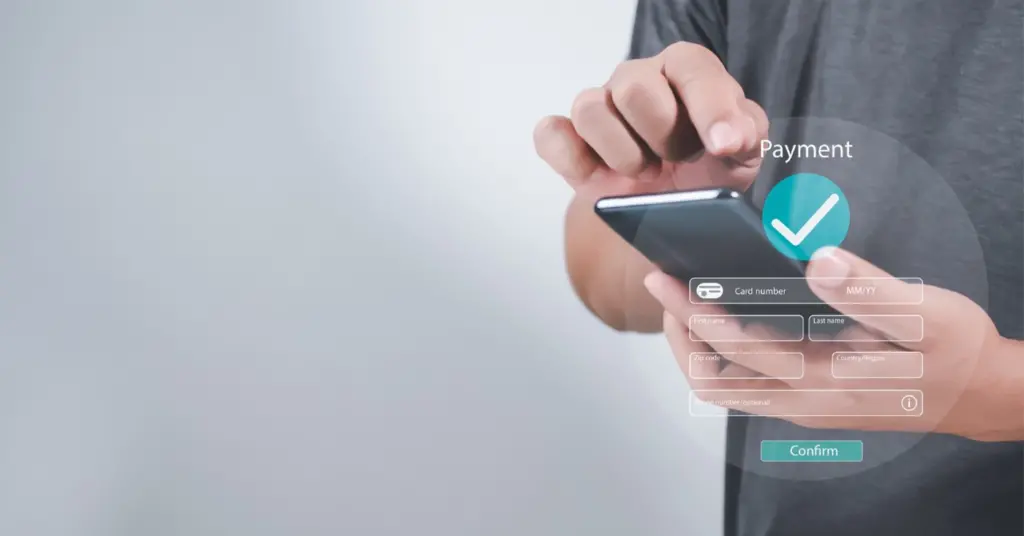Discover tips on how your medical practice can use automatic payments to your advantage and improve your patients' payment experience.
Research shows that in 2022, over 50% of private sector workers were enrolled in High-Deductible Health Plans with Savings Options (HDHP/SOs). These plans combine high deductibles with tax-advantaged savings accounts like HSAs or FSAs. While HDHP/SOs can provide more coverage options, research also indicates they shift more healthcare costs to patients upfront before insurance coverage kicks in. Recurring payment options, or automatic payment options, allow practices to securely collect patient payments on a scheduled basis. Instead of billing every month, payments are automatically deducted from a patient's account.
This approach gets rid of manual payment tasks for staff while giving patients convenience and reliability. When implemented thoughtfully, recurring payments can transform practice management. Automated payments through electronic methods on file can maximize revenue collection while reducing labor.
While the above percentage may appear to be just a number, the number means more than many people realize. The shift toward high-deductible plans highlights the need for patients to actively understand and navigate their financial obligations. This means many patients require a better way to manage their medical payments, especially those who are committed to paying on time.
However, experts caution that implementing automated payments requires care to avoid unintended issues. Providers should educate patients on both the convenience and risks upfront, simplify enrollment, follow security best practices, and continuously optimize based on patient feedback.
With the right approach, automated payments can benefit providers through financial stability and patients through payment simplicity. However, striking the ideal balance relies on compassionate implementation and open communication. This is why we want to share five tips on how medical practices can successfully use automatic payments to their advantage.
Tip 1: Educate Patients About Automatic Payment Options
We know it, and we get it: change can be difficult. For patients, the idea of handing over debit/credit card or bank account information for recurring automatic charges may initially trigger fear or distrust. This is why educating patients is critical for driving the adoption of automatic payments.
So, how can providers get more patients enrolled? The key is communication—explaining the benefits so patients fully understand the value. Many patients may not even be aware that this is something their healthcare provider offers. Practices should promote recurring payment options and communicate the benefits whenever the opportunity presents itself. The more a medical practice promotes automatic payments, the higher the opt-in rate will be.
When patients realize how automatic payments simplify their lives, they will be more inclined to sign up. However, educating patients about automatic payment options does require some effort. After all, each of your patients has unique learning preferences. Specific conveniences should be highlighted, like reducing time spent on managing bills and eliminating late payments or forgotten due dates.
Patients want to know their healthcare costs are handled reliably without constant effort. Here are a few tips to keep in mind:
- Place posters and brochures in waiting rooms. The materials should clearly explain how automatic payments work.
- Send email and text reminders to inform patients about automatic payment options. Remember to make enrollment easy.
- Train staff to bring up the automatic payment choices during checkouts.
- Highlight benefits like no checks to write and no worries about late fees and penalties.
Tip 2: Simplify the Enrollment Process
When introducing automatic payments, look at the process through a patient's eyes. As far as the enrollment process, it should be as quick and easy as possible. Whether online or in-person, limit steps and use clear language that patients understand.
Direction during enrollment eases any apprehension that patients may have. Follow-up calls to walk through questions or concerns are also impactful. The more support patients have, the more comfortable they will feel switching to automated payments. Once patients decide automatic payments are worth it, the enrollment process should be as quick and painless as possible.
Complicated registration processes are enough to dissuade some patients, even the most agreeable ones. Allow enrollment to take place at any step, whether a patient is checking in or checking out. Permit patients to enroll through an online portal with just a few clicks. Mail enrollment forms that can be returned with a signature and offer an easy phone-based enrollment.
Make sure your staff is friendly and available to help patients who need help enrolling. Avoid making patients jump through too many hoops and only ask for essential information on the enrollment form. Many patients will have reservations about sharing too much information. The easier you make it for patients to get signed up, the faster you will get them on automated payments.

Tip 3: Offer Incentives for Automatic Payments
Providing incentives is a good way to motivate patients to enroll. Here are some potential incentives practices can consider:
- Offer a slight discount on medical bills when paid through automatic payments, as patients appreciate tangible benefits. A discount—even a modest one—signals value. It can also be the gentle push patients need to embrace this payment process.
- Offer a welcome gift (i.e. a branded bag or tumbler) when patients first enroll in automatic payments. Patients tie these types of perks into the medical practice, fostering loyalty.
- Enter patients into a monthly raffle for a gift card when they pay via automatic payments. Raffles and gifts produce positive emotions. The unexpected—regardless of what it may be—creates memorable experiences.
Remember, an incentive does not have to be overly expensive, or even expensive at all. Even small rewards can go a long way in showcasing the benefits of this payment process. However, we encourage you to ensure any incentives do not go against any relevant regulations.

Tip 4: Ensure Security and Compliance
While educating patients on automatic payments, reassure them their data remains safe and secure. Patients must trust that you will protect sensitive financial information. When dealing with sensitive financial information of any kind, security is crucial. Patients need to know without a doubt that their data is safe for automatic payments to work.
- Be upfront about all the ways you protect patient information and their financial details. Explain the encryption, firewalls, and other safeguards used to secure data.
- Talk about any cybersecurity training you provide your staff so patients have a better understanding of your medical practice's security best practices.
- Highlight compliance with healthcare regulations like HIPAA.
When it comes to merchant services and payment processors, carefully choose those that make security a top priority. Review payment systems yearly to ensure they meet the latest standards and that they are following best practices. Make upgrades when needed to improve security defenses.
Patients will likely enroll when they know for certain their information is secure. For patients who are considering automatic payments, security concerns will give them a reason to pause. The more transparent you are, the more confident patients will feel. It is also important to reinforce that patient data is never shared or mishandled.
In healthcare, privacy is of the utmost concern. Guarantee that a patient's financial information is accessed only on a need-to-know basis by members of your staff who have been authorized. Patients need assurance that their data stays confidential.

Tip 5: Monitor and Optimize Automatic Payment Systems
Rolling out automatic payments is just the beginning—you need to optimize the payment program over time for the best results. This requires monitoring progress and patient experiences and then improving the processes based on the insight you have obtained.
Start by regularly analyzing payment data trends to identify where there may be issues. Watch for pain points like enrollment drop-off, an increase in declined transactions, or patients still receiving paper bills. Survey patients from time to time about their sign-up experience and overall satisfaction with automatic payments. Ask for any feedback they may have on improvements you could make.
Ensure staff can provide excellent customer service for those who enroll in automatic payments. Provide additional training on best practices and empower staff to solve issues. Research new payment technologies that will improve your systems and implement upgrades that benefit patients. Be open to speaking with patients when they have questions or problems. Address concerns compassionately and quickly reassure them you have their best interests in mind. The goal is to optimize convenience and satisfaction over time, not just at the start.
Use the information you gather to simplify processes in a way that works best for patients. Show patients how committed you are to smoothing out any wrinkles and improving their payment experience. Remember, for your automatic payment program to be a success, patients will need to trust you with their financial details.
Automatic Payments Made Easy with BillFlash
Implementing automatic payments delivers tremendous benefits for medical practices and their patients, both young and older. When executed correctly, automatic payments drive efficiency through predictable revenue and reduced administrative costs.
Patients appreciate the convenience and reliability automation offers. To bring medical practices up to date with the current state of technology, using a solution like BillFlash Pay— built for healthcare practices—helps them improve the efficiency of their workflows. With options for in-office, online, and mobile payments plus features like AutoPay, PlanPay, and StoredPay, BillFlash Pay provides the all-in-one payment experience today's patients expect.
Schedule a demo of BillFlash Pay today to learn more.

